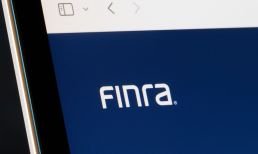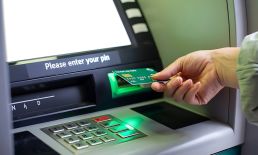The digital shift has been well-documented in many categories but arguably none have been as dramatic as the consumer packaged goods (CPG) category. Research shows it has gone from 3 percent of total sales before the pandemic to 15 percent at its current rate. It’s no wonder that some of the world’s leading CPG companies have a keen interest in the channel, for now and the future.
As part of our ongoing coverage of this space, PYMNTS CEO Karen Webster recently convened a panel of industry experts to shed light on the many nuances shaping this shopping trend. She was joined by Jason Thomstatter, head of digital commerce for Mars Inc.; Abhishek Ahluwalia, global eCommerce growth platforms leader for Mondelēz International; and sticky.io CEO Brian Bogosian.
The group was in agreement that while the rise in brands embracing direct-to-consumer (D2C) channels has gained substantial momentum, there is still much to be learned about a practice that is still very much evolving.
“Even pre-COVID we were seeing a massive acceleration in this space and I think COVID just kind of lit a fire and had it growing even faster,” Thomstatter said, noting an across-the-board increase in digital commerce business, whether from consumers looking for new products, new distribution points or trying to get new experience from existing eCommerce businesses.
Bogosian said he thinks we are in the middle of a dynamic shift in consumer buying patterns and felt this new behavior was here to stay.
“Consumer behaviors, I think initially, were altered somewhat by the pandemic,” Bogosian said. “But I think people are now realizing that there’s a convenience factor in addition to the safety factor, around getting what you want and not wasting time going to a retailer,” he added, pointing to the discrepancy of discovering items are out of stock in-store versus the certainty of ordering something online and knowing it’s coming.
Advertisement: Scroll to Continue
And according to Thomstatter, it will also continue to evolve alongside changing consumer expectations.
“Direct to consumer businesses are very different than your traditional retail business, so we need to very quickly listen to the consumer, react and deliver a response in a very agile way,” Thomstatter said. “It’s very different than what we traditionally did, where we were planning products out two, three years in advance and kind of producing in that mindset.”
At the same time, he said, consumers are also going to expect more from the digital space as they become increasingly familiar with it, a change he said that cannot be ignored. D2C “gets boring after a while because everyone’s doing the same thing so you have to kind of step up your game and really evolve it,” Thomstatter said.
With Opportunity Come Challenges
While a sudden surge in online D2C business is a good thing, it also presents challenges, the panelists said, ranging from distribution, getting new products to market, fulfillment within existing channels and even things like setting up bank accounts and clearing legal requirements to do business around the world. But while those challenges brought on by the COVID era have, for the most part, now been met, they’ve left behind companies that are more nimble and efficient.
In the case of Mars, Thomstatter said the company has gone from doing “12-week sprints” that seemed really fast a year ago, to doing two-week sprints today, meaning from start to finish getting a product to market online in just 14 days.
“If you had asked me last year what value props you needed to put in place and what it’s going to take to launch a direct consumer business, I would have said, ‘If you can buy it on Amazon or you buy it in a retailer, don’t even bother,” Thomstatter said.
As D2C results bring new revenue and customers and in turn spark further innovation, organizations can’t help but notice and then invest more, Ahluwalia said.
“So I think for us, from an enterprise point of view [during the pandemic], D2C became more mainstream,” he said, “while from a consumer viewpoint, it has become clear that people prefer to buy from a trusted brand directly, a fact that clearly benefits large CPG players like Mondelez or Mars. For us, not only D2C but all channels of eCommerce have to be complementary. That’s the omnichannel strategy, which we as an organization are focusing on and D2C in our view has a very unique role to play not only a revenue driver, but also building that one-to-one connection.”
Beyond revenue, the D2C shift has also opened a realm of opportunities to leverage new data.
“D2C actually unlocks power of consumer data in two senses,” Ahluwalia said, “because you not only get the certain PII [personal identifiable information] data but also a lot in terms of behavioral data,” he added, including such metrics as glance views, time spent and what is bought and what is not.
Bogosian of sticky.io said properly managing D2C data and understanding your customers was fundamental to a successful online strategy.
“The 600-pound gorilla not in the room is Amazon,” Bogosian said. “You just don’t get the data and you don’t know who your customers are, and I think it’s so important that these brands are taking the initiative to build a direct-to-consumer channel where they will understand what the likes, needs and desires of these consumers are relative to the products they’re selling.”
Incentives, Pricing And Subscriptions
While D2C is hardly a new concept, the unprecedented rush to meet a sudden and unexpected surge in online demand from consumers is, which means this eight-month shift has been filled with trial and error and other teachable events.
For example, the panelists were in agreement that D2C offerings were dependent upon the type of product being sold, and how it is typically consumed. High-end chocolate that was suddenly not available or accessible through normal retail channels benefited from a customized experiential offering, like meeting with a master chef or other personalization, whereas staples like pet food are more conducive to a “set it and forget it” monthly subscription model.
One thing Ahluwalia said he had noticed is that D2C consumers were willing to spend more when they are filling up a custom gift hamper versus what they might typically buy in a supermarket.
“So I think D2C, in a way, blurs pricing,” Ahluwalia said, adding that whenever Mondelez has added initiatives like free shipping, they’ve seen transactions go up. “So that means consumers do respond to these initiatives,” he said.
Bogosian pointed out that about half of his company’s transaction volume was currently on a recurring payment schedule or some type of subscription. But to keep those loyal customers coming back and not terminating, he said it was critical to provide them with a way to control or modulate their orders.
“We’re seeing a lot of value out of the subscription businesses,” Thomstatter added. “Shipping is actually cheaper when people are on these subscription models, because instead of having to do overnight shipping or two day shipping, you can use more efficient shipping models. So there’s a lot of value in those models,” he said.
And so if there was one overriding lesson learned so far about launching new D2C channels, it appears to be that one-size-fits-all solutions don’t exist.
“I think when we go to launch a business, we look at the spectrum,” Thomstatter said. “You’re either trying to just create a traditional sales channel and drive just sales out of that business, or you’re at the other end of the spectrum where you’re really trying to deliver a relationship with a consumer,” he said.
“I think the [payments] process and the infrastructure and the experience end to end is as important as anything else relative to optimizing the opportunity with each of these CPGs and the consumers,” Bogosian concluded.
And of course, there’s candy. Ahluwalia described an effort Mondelez has undertaken around his daughter’s favorite candy, Sour Patch Kids. It’s based on a consumer insight that everybody has that favorite Sour Patch kid. His daughter’s is blue.
“So if you go to the site we enable the consumer to actually pick and mix their favorite kid and put a name on it,” he said. “But then with that insight, we’ve taken our best sellers and we have created two-pound and five-pound bundles which potentially are being sold on Amazon. That’s a clear example of how we’ve been able to take consumer insights on what’s working and understand why it’s working. Then we can take it to one of our larger retail platforms like Amazon. So I think that essentially proves how important D2C is to unlock a new consumer from an idea to a product point of view. It’s an important part of the journey.”



